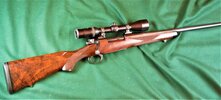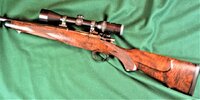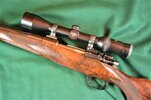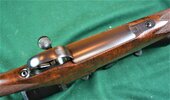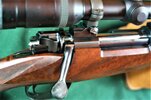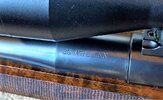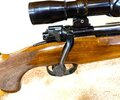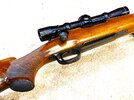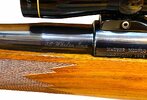The 35Whelen is having a bit of resurgence thanks to the states that mandate .35 cal or larger.
The guys that love the mid-bores love them, the guys that say it has no advantage over a .308 don't. It's not going to change, just like the 30-30 guys and 35Rem guys going at it.
How the upgrade in bullet technology helped the 30s and bypassed the .358s escapes me

but there's are some very good, higher BC bullets available such as the Nosler 225 AB and the Nosler 225 Partition. Then there are the Barnes bullets which somehow manage to get through animals even with their modest SDs due to their relative lightweight VS diameter.
IMHO Bullet construction trumps SD, and once you get complete penetration, that extra SD is going into the ground or a tree. The 35W does carry more energy, with a 225 at 2700+ (easily doable) it's just about as flat shooting as a 30-06 with a 180 grn.
Why is it that SD fans always discount or don't take into consideration frontal diameter??? A dimes difference in diameter doesn't matter but .08 delta in SD does??

Recoil with similar bullet weights is going to be a toss-up. I seriously doubt anyone can feal a difference in the couple more grains of powder the 35W will hold.
Just to put to bed the whole flatter shooting thing, using Nosler load data from their website:
30-06, 220 Nolser Partition (.331 SD) Max velocity they list is 2602 FPS
Explore the world of Nosler, renowned for crafting the finest bullets, ammunition, rifles, and brass. Discover our extensive lineup, including Partition, AccuBond, E-Tip, Ballistic Tip, Custom Competition, and more. Experience superior quality and performance with Nosler products.

www.nosler.com
.35Whelen, 225 Nolser Partition (.251SD), max MV is 2806, but we'll use 2740 cause the .35W test barrel was 26" VS 24" for the 30-06 and I don't want to give the lumbering 35W a false advantage, so I subtracted 30 FPS per inch. It's a little high, but it's not going to matter.
Explore the world of Nosler, renowned for crafting the finest bullets, ammunition, rifles, and brass. Discover our extensive lineup, including Partition, AccuBond, E-Tip, Ballistic Tip, Custom Competition, and more. Experience superior quality and performance with Nosler products.

www.nosler.com
Gives the 30-06 a MPBR of 288yds on an 8" kill zone and at 500 yds 1166LBs of energy
The "ballistically handicapped" 35Whelen has a MPBR of 307yds on the same 8" kill zone

and 1842 lbs of energy at 500 yds
Drop for the 35W 225 load at 500 yds with a 200yd zero is 47"
Drop for the 30-06 220 load at 500 is 59.4" with the same 200yd zero
So for rough numbers.. 12" less drop and around 650lbs more energy at 500yds, beyond what most guys are shooting game at.
You can cherry pick some higher BC bullets in .308, but a 140FPS advantage isn't going away in 200yds, or 300yds. Yes you can load the 30-06 slightly hotter, but there's guys reporting 2900 with 225s and TAC.
Data courtesy of Strelok Pro.... using the same weather/temp.
Couple of points for the OP.
Factory 35W ammo is underloaded due to the older guns, pumps and autos.
There are lots of ballistic programs on line, don't believe me, run your own data.


